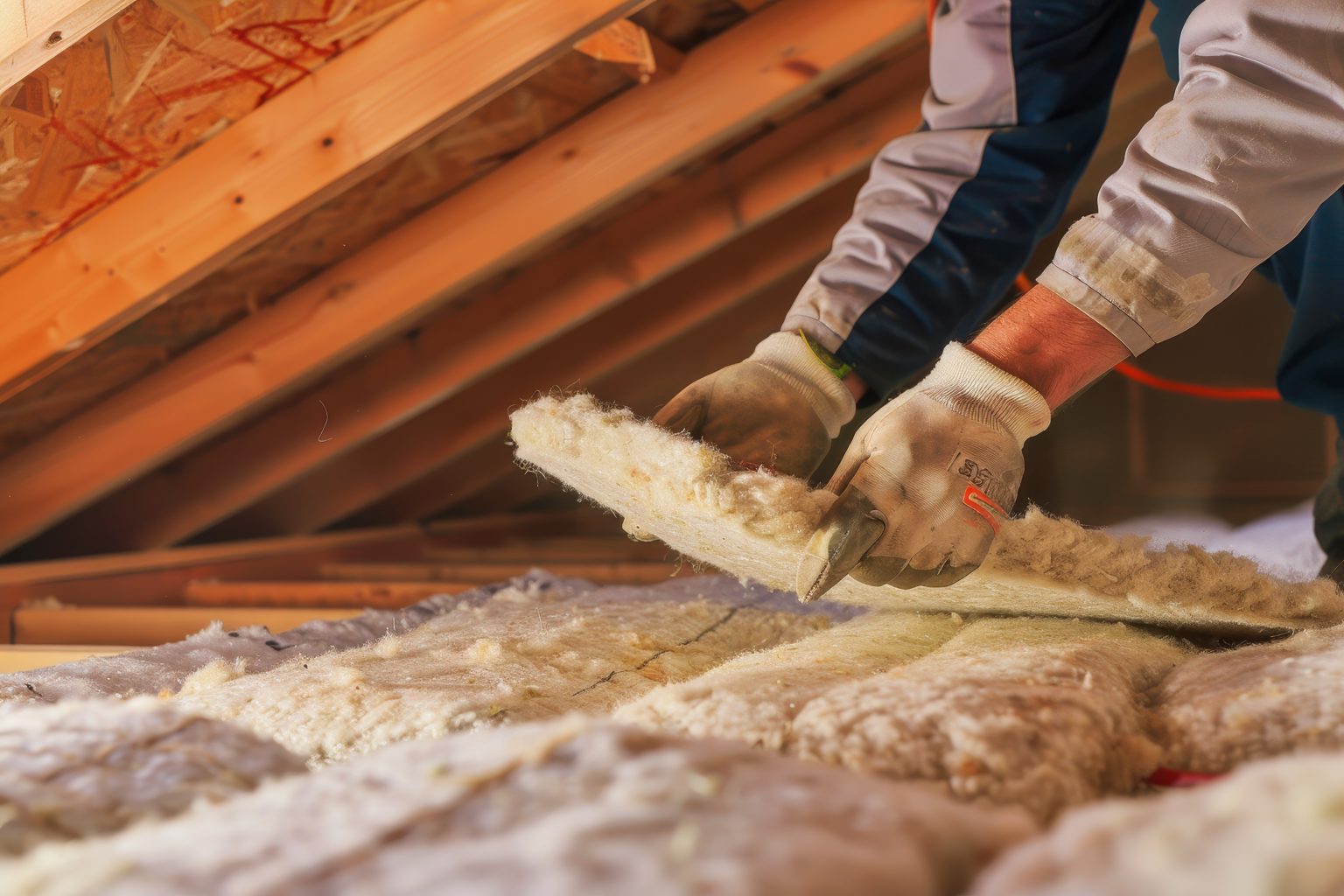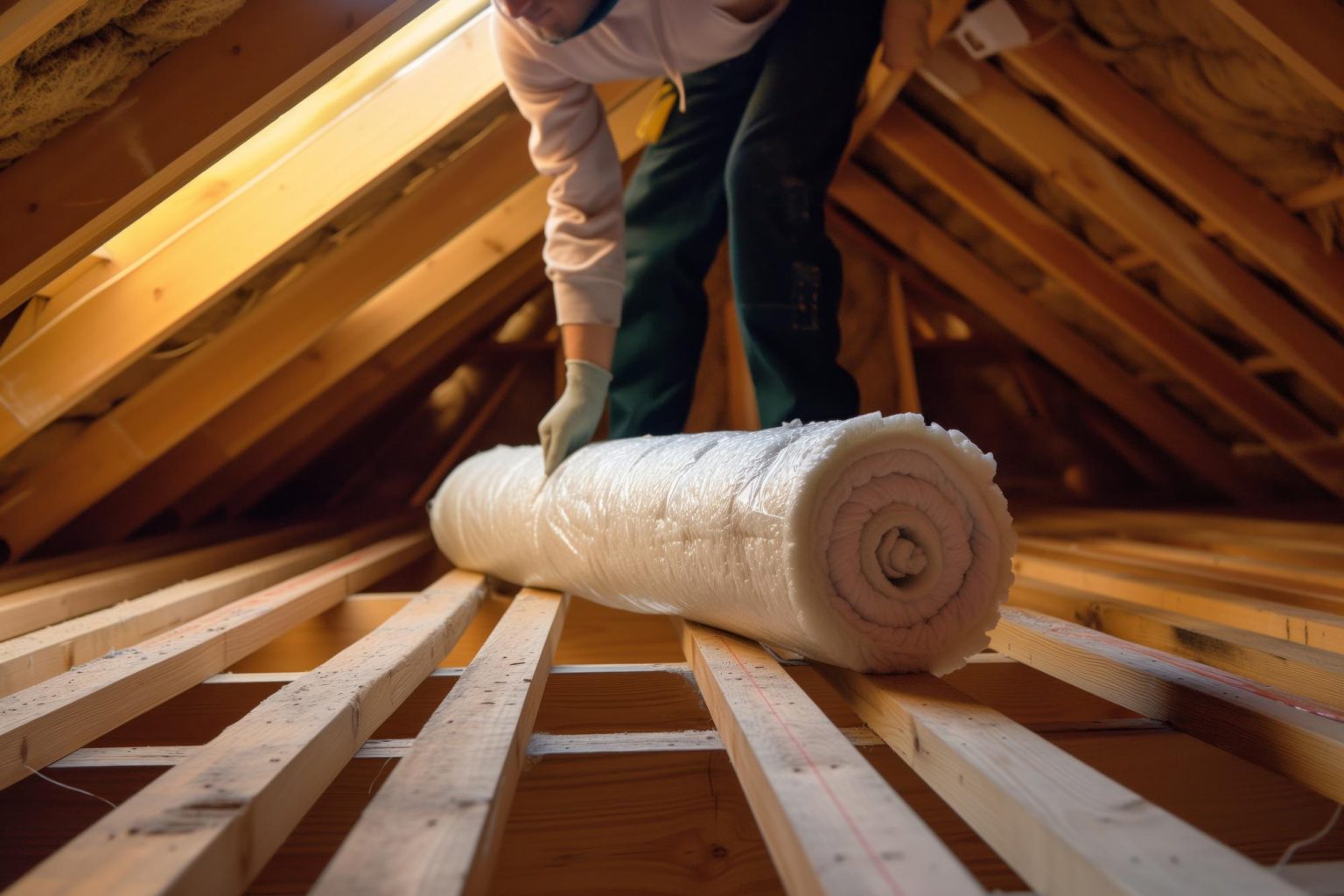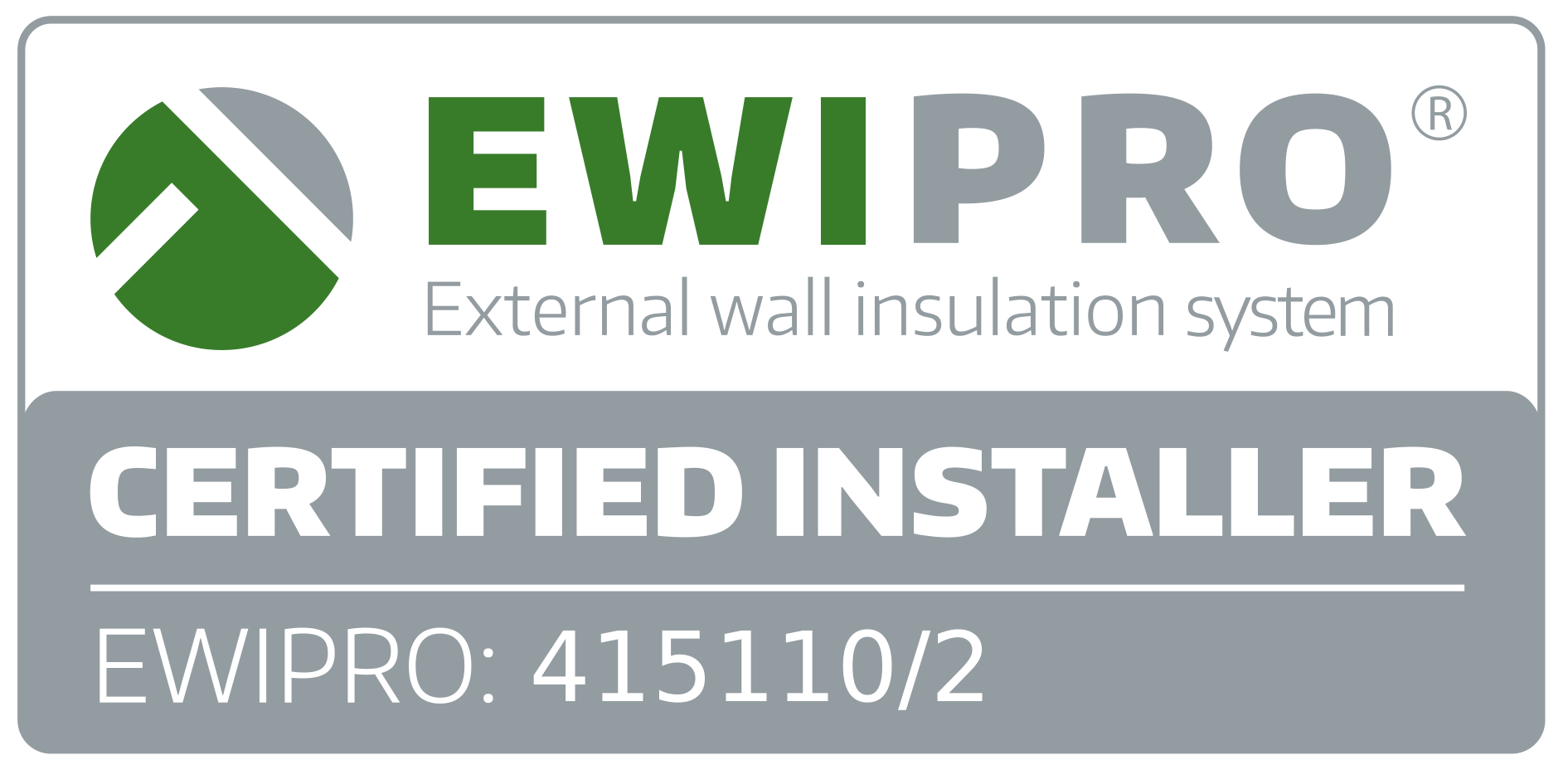Loft Insulation
- Home
- /
- Loft Insulation
Loft insulation
Loft insulation refers to materials installed in your home’s loft space to help prevent heat loss and keep your home warmer. Properly insulating your loft is one of the most effective and affordable ways to improve your home’s energy efficiency.
Loft insulation works by creating a thermal barrier between your warm, heated living spaces downstairs and the cold air in your loft. Heat naturally rises and escapes through the roof, so adding insulation helps trap that warm air and prevent it dissipating into the loft space. This reduces your heating costs and keeps your home cozier.
The most common loft insulation materials are:
-Mineral wool – Made from melted stone or glass fibers and recycled materials. It’s fire-resistant and available as quilts or loose-fill.
-Glass wool – Similar to mineral wool but made from melted sand or recycled glass. Also fire-resistant and available as rolls or loose-fill.
– Sheep’s wool – A natural fiber insulation made from recycled sheep’s wool. It’s breathable and controls moisture.
– Cellulose – Made from recycled paper fibers and treated with fire retardants. It can be blown in as loose-fill.
– Polyurethane foam – Applied as a liquid that expands to fill spaces. It has high insulation value and seals gaps.
The right insulation helps trap warm air inside your living spaces during winter and keeps your home cooler in summer. Installing loft insulation is an essential step for making any home more energy efficient.
Why Install Loft Insulation?
Installing loft insulation offers numerous benefits that make it one of the most cost-effective and impactful home improvements you can make. The key reasons to insulate your loft include:
– **Reduces Energy Bills** – Heat rises, and around 25% of it can be lost through the roof. Insulating your loft significantly reduces this heat loss, lowering heating costs. Well-insulated lofts can save hundreds of pounds per year on energy bills.
– **Improves Home Comfort** – Preventing heat escaping through the loft keeps the rest of the house warmer. This allows you to maintain comfortable temperatures without needing the heating on constantly. Loft insulation also aids temperature regulation in summer by reducing heat transfer into the home.
– **Reduces Carbon Footprint** – Better insulation means your heating system doesn’t have to work as hard to maintain temperature. This results in lower energy usage and carbon emissions. Loft insulation is a great way to make your home more eco-friendly.
– **Required for EPC Rating** – Under UK building regulations, loft insulation is mandatory to achieve the required Energy Performance Certificate (EPC) rating. An EPC rating of C or above is needed when selling or renting out a property. Loft insulation helps meet this requirement.
Recommended Loft Insulation Levels in the UK
The level of loft insulation recommended depends on whether it is an existing property or a new build.
For existing properties, building regulations require a minimum of 270mm thickness of insulation in the loft space. However, to achieve maximum energy savings, agencies like the Energy Saving Trust recommend installing insulation up to 270-300mm thickness.
The recommended level for new builds is higher, at least 300mm thickness. New buildings need to meet stricter energy efficiency standards.
Installing insulation up to the recommended 300mm thickness can reduce heat loss through the roof by up to 75%. This significantly reduces energy bills for heating the home.
Therefore, for existing homes, aim for 270-300mm insulation if possible. And ensure new builds have 300mm or thicker insulation in the loft. This will provide excellent thermal performance and drastically reduce heat loss.
How Much Can You Save with Loft Insulation?
Installing loft insulation can lead to significant savings on your energy bills. The amount you save will depend on factors like your existing insulation levels, house size, and energy usage. However, on average, UK homeowners can expect the following savings:
– **Average savings on energy bills per year:** Homeowners typically save between £100 and £300 per year on heating costs after installing loft insulation. Improving insulation levels could cut your bill by up to 25%.
– **Savings over time:** The savings from loft insulation accumulate year after year. Over 20 years, total savings could range from £2,000 to £6,000 depending on your house. Loft insulation is a long-term investment that pays off.
– **Impact on EPC rating:** Increased loft insulation raises a home’s Energy Performance Certificate (EPC) score. EPC ratings estimate the energy efficiency of a property. A higher score means lower running costs. Adding insulation could potentially increase your EPC score 1-2 grades (e.g. D to C), saving energy and money.
Overall, investing in loft insulation leads to reduced energy use, smaller bills, and greater home comfort. With proper installation, the insulation can continue saving you money for decades. Contact Evergreen Power today to maximize savings through better insulation.
Types of Loft Insulation Materials
There are three main types of loft insulation materials used in UK homes:
Mineral Wool

Mineral wool, made from molten glass, stone, or slag, is one of the most common loft insulators
**Pros:**
– Effective insulator due to its non-flammable, fire-resistant properties
– Available in rolls or loose-fill
– Relatively inexpensive
**Cons:**
– Can be irritating to skin and lungs during installation – Settles over time, becoming less effective
Cellulose
Cellulose insulation is made from recycled paper products.
**Pros:**
– Highly effective insulator with an R-value up to R-3.8 per inch
– Made from recycled materials
– Does not settle over time
– Low cost
**Cons:**
– Can feel dusty during installation
– May attract rodents looking to nest
Sheep Wool
Sheep wool insulation comes from sustainably raised sheep.
**Pros:**
– Natural material, biodegradable and renewable
– Excellent noise reduction abilities
– Does not irritate skin or lungs
**Cons:**
– More expensive than other insulation materials
– Absorbs moisture easily, requiring a vapor barrier
– Settles over time, becoming less effective
Overall, mineral wool and cellulose tend to be the most cost-effective options for loft insulation in UK homes. Sheep wool is an excellent eco-friendly choice despite the higher cost. The insulation material that works best depends on your specific home and needs.
How to Install Loft Insulation

Installing loft insulation can seem daunting, but it’s an important home improvement project that can save you money on your energy bills. There are two main options for installing loft insulation – DIY or hiring a professional insulation company.
DIY Loft Insulation
Installing loft insulation yourself is a great way to save on labor costs. With some preparation and safety precautions, it can be a straightforward DIY project.
To install loft insulation:
– Clear your loft of any stored items so you have open access to the space.
– Wear protective gear like goggles, mask, gloves and cover exposed skin. The particles can be itchy.
– Calculate how many insulation rolls you need for the space.
– Roll out the insulation between and over the joists, making sure there are no gaps.
– Use wire netting to hold the insulation in place if needed.
– Top up and replace any areas that get thin over time.
Installing insulation yourself takes 1-2 days depending on the size of your loft. Insulation rolls cost £40-£70 each.
Professional Installation
Hiring professional loft insulators takes the hassle out of installing insulation yourself. Experienced insulators will:
– Provide all materials and do all preparation work.
– Access hard to reach areas in your loft space.
– Install to the recommended thickness and density.
– Offer certified guarantees for their insulation work.
Professional installation for an average loft takes 1 day and costs £200-£500 depending on the size of the space and type of insulation used.
Getting professional help ensures your insulation is installed correctly for maximum energy savings. Leading insulation companies like Evergreen Power offer fast installation without any disruption to your home.
Signs You Need New Loft Insulation
If your loft insulation is more than 10 years old or was installed poorly, it may be time to add new insulation or top up existing insulation. Here are some signs that indicate you need new loft insulation:
– **Thin or compacted existing insulation**: Over time, insulation can settle and compress, becoming less effective. If your existing insulation is very thin or compacted down to less than 120mm thickness, it’s a good idea to add more.
– **Gaps noticed in insulation coverage**: Insulation should cover the entire loft floor, leaving no gaps. If you notice bald spots or gaps in insulation coverage, these allow heat to escape and should be filled in.
– **Drafts felt from the loft**: If you can feel cold air or drafts coming from your loft into the rooms below, it’s a sign your insulation is not effective enough. New insulation will help block drafts.
– **High energy bills**: Poor loft insulation can make your home much more expensive to heat. If your energy bills seem disproportionately high given your home’s size and heating system, lack of proper loft insulation may be the culprit. Adding insulation can lower bills.
Checking for these signs can indicate if your loft needs new or additional insulation for maximum energy efficiency and comfort. Our team at Evergreen Power can inspect your existing insulation and make professional recommendations if upgrades would be beneficial.
Loft Insulation Regulations
Installing loft insulation in your home must comply with UK building regulations and planning rules. These regulations help ensure the insulation is properly installed and safe.
Building Regulations
Part L of the UK building regulations sets standards for conserving fuel and power in homes. It requires loft insulation to meet a minimum thermal performance level based on the age of the property.
For existing dwellings, the regulations recommend 270mm thickness of mineral wool insulation in the loft space. This equals an insulation rating of at least 0.16 W/m2K.
New dwellings are expected to achieve higher energy efficiency standards. Building regulations advise using 300mm mineral wool loft insulation, equivalent to 0.13 W/m2K.
These regulation levels aim to prevent heat loss through the roof and reduce energy bills. Failing to meet them could cause problems when selling your home.
Planning Rules
Some homes have height restrictions, such as conservation areas and listed buildings. Installing loft insulation can increase the height of the loft space.
Planning permission may be required if the insulation exceeds the allowed height limit. Most height restrictions are around 40-50cm above the joists.
Our team will check the height when assessing your loft space. We will advise you if planning permission is needed and help with the application if required.
With careful installation, loft insulation can meet building regulations without exceeding height limits. We ensure compliance with all regulations for a valid installation.
Loft Insulation Grants and Funding
Installing loft insulation can be a significant upfront investment for homeowners. However, there are several grant schemes and funding options available to help make loft insulation more affordable.
One of the main schemes is the government’s Energy Company Obligation (ECO) scheme. Under ECO rules, energy suppliers have obligations to fund energy efficiency improvements in British households. Loft insulation is one of the key measures funded under ECO. To qualify for ECO funding, you usually need to be in receipt of certain benefits or have a low income. ECO funding can cover 100% of loft insulation costs for eligible households.
Some energy companies also have their own obligations or schemes to help customers insulate their homes. For example, some offer discounted insulation to vulnerable and low-income households. It’s worth contacting your energy provider directly to ask about any loft insulation offers or funding they may have.
Many local councils and regional governments also offer grants or schemes to support home insulation improvements. These are usually targeted at low-income households and vary by region. Some councils provide loft insulation grants covering 50% or more of costs. Your local council website will have information on any home insulation grants available in your area.
With the right grant funding, homeowners can significantly reduce the cost of installing loft insulation. It’s worth researching all the options, as there is often government support available to improve energy efficiency for those most in need. Evergreen Power can also assist customers in accessing any grants or funding available.
Why Choose Evergreen Power for Your Loft Insulation
Evergreen Power has been providing quality loft insulation services since 2013. With over 10 years of experience, our team has the expertise to handle any loft insulation project.
We take great pride in our workmanship and customer satisfaction. That’s why we back all of our insulation installations with our workmanship warranty. Our service promise ensures we will arrive on time, protect your property, and clean up after ourselves.
With thousands of satisfied customers and our decades of experience, you can trust Evergreen Power to handle your loft insulation project. Our team has the expertise to provide a quality installation and ensure you get the energy savings you expect. Contact us today to learn more or request a free quote!



 Certified by
Certified by 




















